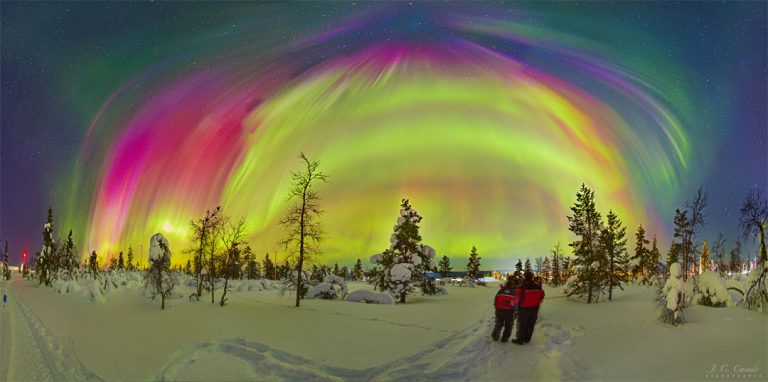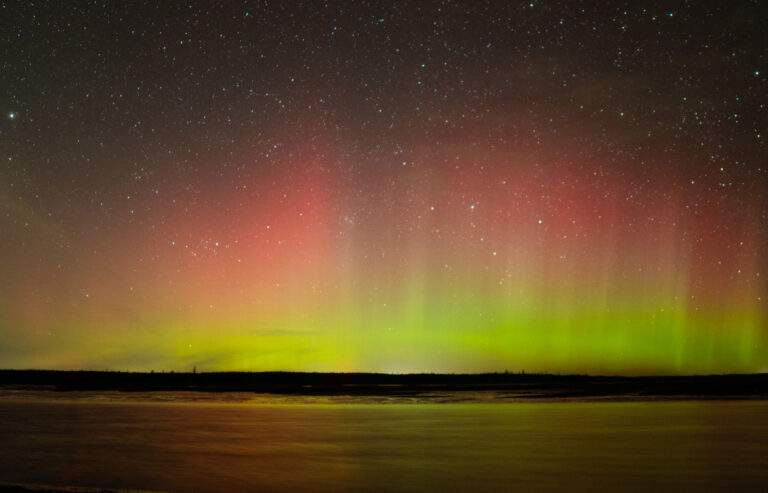美国西弗吉尼亚州的北极光
See Explanation. Clicking on the picture will download the highest resolution version available.
请参阅说明。单击图片将下载可用的最高分辨率版本。

See Explanation. Clicking on the picture will download the highest resolution version available.
请参阅说明。单击图片将下载可用的最高分辨率版本。

2023年11月11日 The SAR and the Milky Way Image Credit & Copyright: Julien Looten Explanation: This broad, luminous red arc was a surprising visitor to partly cloudy evening skies over northern France. Captured extending toward the zenith in a west-to-east mosaic of images from November 5, the faint atmospheric ribbon of light is an example of a Stable Auroral Red (SAR) arc. The rare night sky phenomenon was also spotted at unusually low latitudes around world, along with more dynamic auroral displays during an intense geomagnetic storm. SAR arcs and their relation to auroral emission have been explored by citizen science and satellite investigations. From altitudes substantially above the normal auroral glow, the deep red SAR emission is thought to be caused by strong heating due…

2023年4月19日 Auroral Storm over Lapland Image Credit & Copyright: Juan Carlos Casado (Starry Earth, TWAN) Explanation: On some nights the sky is the best show in town. On this night, auroras ruled the sky, and the geomagnetic storm that created this colorful sky show originated from an increasingly active Sun. Surprisingly, since the approaching solar CME the day before had missed the Earth, it was not expected that this storm would create auroras. In the foreground, two happily surprised aurora hunters contemplate the amazing and rapidly changing sky. Regardless of forecasts, though, auroras were reported in the night skies of Earth not only in the far north, but as far south as New Mexico, USA. As captured in a wide-angle image above Saariselkä in northern…

2022年4月2日 Nova Scotia Northern Lights Image Credit & Copyright: Jason Dain Explanation: This almost otherworldly display of northern lights was captured in clear skies during the early hours of March 31 from 44 degrees north latitude, planet Earth. In a five second exposure the scene looks north from Martinique Beach Provincial Park in Nova Scotia, Canada. Stars of the W-shaped constellation Cassiopeia shine well above the horizon, through the red tint of the higher altitude auroral glow. Auroral activity was anticipated by skywatchers alerted to the possibility of stormy space weather by Sun-staring spacecraft. The predicted geomagnetic storm was sparked as a coronal mass ejection, launched from prolific solar active region 2975, impacted our fair planet’s magnetosphere. Tomorrow’s picture: Why are we moving so fast?…